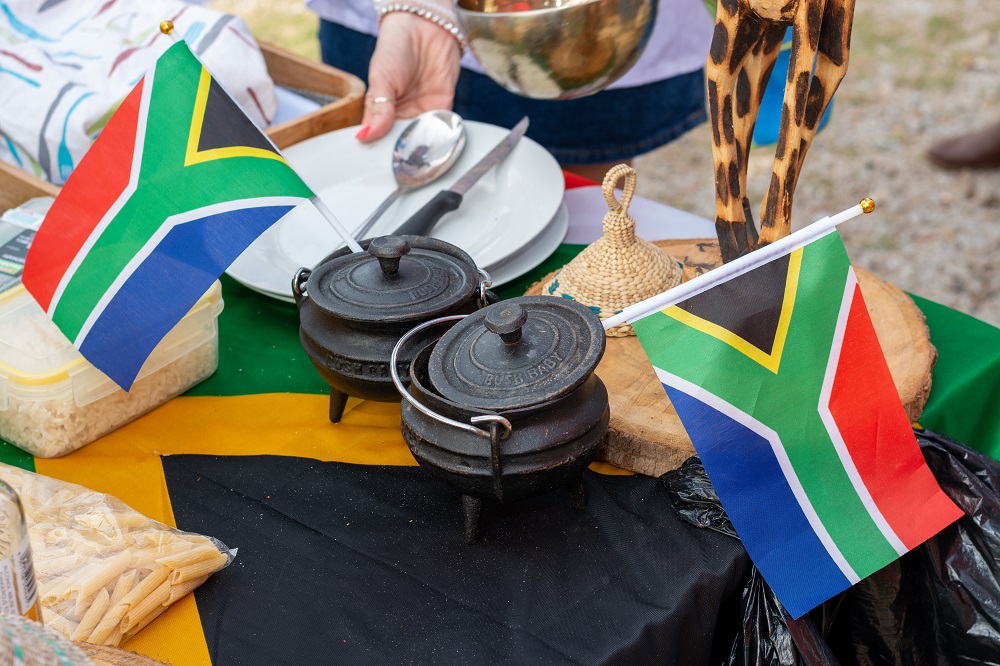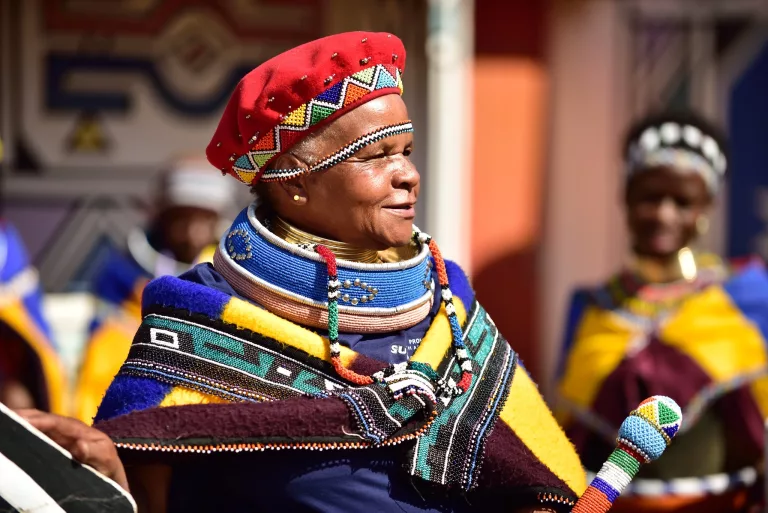The Ultimate Guide To South African Culture Today
The Ultimate Guide To South African Culture Today
Blog Article
South African Culture Today Fundamentals Explained
Table of Contents5 Simple Techniques For South African Culture TodayGetting The South African Culture Today To Work6 Simple Techniques For South African Culture TodayThe smart Trick of South African Culture Today That Nobody is Talking AboutThe Main Principles Of South African Culture Today Not known Incorrect Statements About South African Culture Today
A matter of significance in Zambian villages is the passing away of liked ones. All participants of the town put money, time and effort with each other for the funeral of the deceased.Music and dancing is a very crucial aspect of the Zambian society. The different tribal devices have their very own dancing forms; nevertheless, makishi is typical among all tribes.
South African Culture Today for Dummies
When it comes to music, drums are utilized one of the most, with a variety of drumming events. In Zambia, majority of individuals are Christian; Protestant and Roman Catholic. There are tiny teams of Muslims and Hindus, with the rest adhering to regional indigenous tribal beliefs.

South African heritage and society is tremendously varied, and includes lots of different teams of individuals who each have their own customs and ideas. Having such a diversity of individuals and cultures is what makes South Africa so special. In real sense of the phrase, we are a rainbow country.
South Africa has around 3 hundred thousand Portuguese people residing in it. Making it the 7th on the list of nations with the most Portuguese individuals in it beyond Portugal. Portuguese is not just a society, however it is additionally a language and a nationality. Portuguese individuals originate from the nation of Portugal in Europe, nevertheless, because of Portugal (like lots of other nations in Europe) checking out the globe and conquering other nations throughout the 15th 20th centuries, South Africa has what we call Portuguese South African's living in it.
The Ultimate Guide To South African Culture Today
Among the famous functions of the topography is a plateau that covers practically two thirds of the center of the country. The plateau complicated rises towards the southeast, where it climaxes in the Drakensberg array, component of a cliff that divides the plateau from the seaside locations. The Drakensburg consists of Champagne Castle, the highest possible peak in the nation.
The area north of the Witwatersrand, called the bushveld, slopes downward from east to west towards the Limpopo River, which creates the international border. The western area of the plateau, the middleveld, additionally descends in the direction of the west and differs in altitude between the highveld and bushveld. In between the Drakensburg and the eastern and southern coast, the land comes down to the sea.
Nearer the coast there is a low-lying level called the eastern lowveld. Southwest of the plateau the country ends up being progressively a lot more arid, paving the way to the stony desert of the Great Karroo, verged on the eastern by the reduced, much better watered plateau of the Little Karroo. Separating the dry southern inside from the sandy coastal of the southern coastline and West Cape is another range, the Langeberg.
The Ultimate Guide To South African Culture Today
The country's racially, imp source ethnically, and politically divided background has actually produced nationwide and subnational signs that still operate as icons of the nation, and others signs that are accepted only by certain teams. The monuments to white settler conquest and political dominance, such as the Afrikaner Voortrekker ("pioneer") Monument in Pretoria and the Rhodes Monument recognizing the British colonial empire builder and Cape head of state Cecil Rhodes, continue to be sectarian icons.
The first modern inhabitants were the San ("bushman") hunter-gatherers and the Khoi ("Hottentot") peoples, that rounded up livestock (South African culture today). The San may have existed for thousands of years and left evidence of their presence in hundreds of ancient cavern paints ("rock art"). Bantu-speaking clans that were the ancestors of the Nguni (today's amaZulu, amaXhosa, amaSwazi, and vaTsonga individuals) and Tswana-Sotho language teams (today's Batswana and Southern and Northern Basotho) migrated below east Africa as early as the fifteenth century

The two former republics of the Orange Free State and Transvaal (South African Republic) were established by Afrikaner settlers who beat and dispossessed the Basotho and Batswana. Lesotho would have been forcibly integrated right into the Orange Free State without the expansion of British protection in 1869. The utmost marriage of the nation arised from the South African Battle (18991902) between the British and both Afrikaner republics, which decreased the country to spoil at the beginning of the twentieth century.
Afrikaners historically considered themselves the just true South Africans and, while giving full citizenship to all residents of European descent, rejected that status to individuals of color up until the autonomous shift of 1994. British South Africans preserve a sense of cultural and social connection to Great Britain without compromising their identification as South Africans.
The smart Trick of South African Culture Today That Nobody is Discussing
The variety and fragmentation within ethnic collections and the read balance of tensions in between those teams throughout the twentieth century protected against interethnic civil dispute. While intergroup tensions over sources, privileges, and political supremacy continue to be, those disputes are as likely to match Zulu YOURURL.com against Zulu as Zulu against Xhosa or African versus Afrikaner.
From colonial India, British merchants and managers brought the curved metal ornamental roofing systems and slender lace work columns that still represent the verandas of cottages arounds and cities throughout the nation. Holy places add a crucial architectural aspect also in the tiniest communities. In addition to the rising steeples and traditional stonework of Afrikaans Dutch Reformed churches, Anglican churches, synagogues, mosques, and Hindu shrines provide variety to the religious building scene.

Butchering and the developing of conventional grain beer are crucial in securing the engagement and goodwill of the forefathers that are taken into consideration the guardians of good luck, prosperity, and wellness. Indian areas keep their indigenous cooking practices and apply them on Islamic and Hindu ritual and ceremonial occasions. Afrikaners and Coloured individuals collect at weekends and unique celebrations at multifamily barbeques called braais, where area bonds are reinforced.
Due to the fact that this was the key financial enterprise of both black Africans and white colonists, problem in between those groups focused on the property of grazing land and livestock. In 1867, the biggest ruby deposits in the world were found at Kimberley in the west main location. The wide range from those fields aided fund the exploitation of the biggest gold reef on the planet, which was discovered on the Witwatersrand in 1886.
7 Simple Techniques For South African Culture Today
This brought about misconceptions and deliberate misrepresentation in the negotiations of white inhabitants and federal government authorities with African principals throughout the colonial duration (South African culture today). In the facility of African gets, some elements of communal and primarily "tribal count on" land period were protected, and also in white backwoods, kinds of common tenure were still practiced in locations with African neighborhoods
After the autonomous makeover of 1994, programs for land restitution, redistribution, and reform were set up, however progress has been slow-moving. The white minority still controls eighty percent of the land. Following farming land intrusions in Zimbabwe, the Department of Land Matters has promised to speed up land redistribution.
Report this page